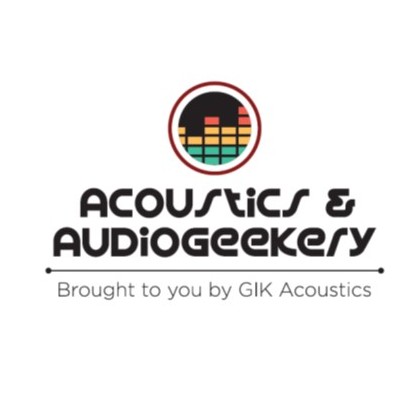
Hello, and Welcome!
Welcome to the launch of Acoustics & Audiogeekery, brought to you by GIK Acoustics. I have been writing here for a few months now, but we recently decided to formalize my writings into this blog. The aim is to be a resource for you, something that grows in time into a repository of discussions and techniques to make better audio. Acoustics & Audiogeekery will obviously include a lot of writing, but we’re also talking about audio so sometimes audio examples and demonstration videos will be appropriate.
But before we dive in to the audiogeekery, I think it’s important to tell you about the audiogeek. I wanted to take some time to introduce myself, to help you understand where I’m coming from in the quest for better audio.
Some people still recoil at “geek,” thinking back to to high school where the term was used derogatorially for people who didn’t fit in and showed signs of social awkwardness, keen intelligence, and a willingness to explore things they found interesting. In the IT community, the term “geek” came to mean someone dedicated to creative and elegant problem-solving. This conception is quite in line with what I mean by audiogeek. Audio is interesting, and manipulating technology to solve problems and make better audio is the essence of what I mean by “audiogeekery.”
Birth of an audiogeek
My earliest memory of manipulating audio technology to make the audio I wanted to hear was dangling a microphone over my Fisher-Price record player to make mix tapes. The microphone was connected to my tape cassette recorder, and I used to pretend I was a radio DJ playing a bunch of songs on the radio. My parents had a pretty good selection of 45s of various pop hits from the 50s and 60s, so these were of course in heavy rotation.
By the time I got to high school, I was addicted to the electric guitar, learning both musicianship and the art of crafting tones. I had a simple tube amp, and discovered distortion and effects pedals early on. I spent many, many months locked in my bedroom learning to unpack & play the guitar parts for Rush’s Moving Pictures all the way through. This is where I started to learn critical listening, which is a skill I will talk about a lot. Using a slightly thinner or thicker guitar pick, for instance, or squeezing the pick harder or more lightly, or hitting the strings closer to or further from the bridge, all produced what I came to perceive as a vastly different tones coming out of the speaker.
Early Experimentations
Another time, someone gave away a set of stereo speakers. I brought them home and hooked them up in parallel to my existing speakers, placing one speaker in each corner of the room. I remember being mesmerized by the sound when I stood in the exact center of the room – something I know now to definitely be suboptimal. I can’t imagine how bad the nulls were at the center point of all 3 room dimensions in my mostly-square bedroom.
After high school, I spent a bit of time in college studying both broadcasting and jazz guitar. I worked as a car audio installer, and learned how to design and implement sound systems in extremely poor acoustic environments. I built a lot of custom speaker cabinets, and advanced my carpentry, electronics, and basic upholstery skills.
All through this time, I continued recording audio on some level. I worked for a long time in a project studio, equipped with ADATs, a functional mixing console, and a bunch of outboard gear. I also built my all-time favorite pair of speakers that I still use every day. Of course, when computers became powerful enough to run DAWs, my recording quality went up a level simply because I had more access to the means of making quality recordings. But the astute among you will note that there is one aspect of audio that I haven’t yet mentioned: acoustics.
Acoustics: My Light-bulb Moment
After many years of not being satisfied with the recordings I was making, I am happy to say I discovered the importance of room acoustics. For years beforehand, I was under the impression that my lack of better audio was due to sub-par audio equipment. Audio Nirvana was just around the corner, after the purchase of the next microphone, or the next preamp, or the next plugin, or the next set of speakers, or….

Finally, I started reading up on acoustics, and built my first crude DIY panels. A band I was in rehearsed in a basement, and I was deeply unsatisfied with the sound of the drum and acoustic guitar recordings I could make in the basement. After installing the panels and setting up the drum mics, I remember the smile that came on my face when I listened back to the first take. This was it! Acoustic treatment was the key. Finally, after all those years, I realized that this is how the pros got their sounds. The sound of the room was the biggest factor in recording quality – apart from the original performance and engineering technique – I had yet encountered. I was now able to make recordings that sounded professional to my ears. Soon after, I realized that using the panels for playback, mixing, and mastering made just as much of an improvement to what I was hearing. My quest to make better audio took a huge step forward from that moment on.
After this startling introduction to acoustics and room treatment, I learned more and more. I have since been working in the field of acoustics for many years. I have designed hundreds, if not thousands, of studios and listening rooms for clients over the years, most of which are retrofitted into existing rooms without any extra construction being done. It’s a pleasure to be an audiogeek these days, with quality acoustic treatment products so widely available and affordable!
The Quest: Make Better Audio
While it’s easy for acoustics professionals to separate our markets into pro audio and audiophile/home theater communities, I think of both markets in terms of simply making better audio. As any audiophile knows, audio reproduction is itself a creative act. The audiophile gets to express their sonic personality via equipment choices, the characteristics of their listening room, and their acoustic treatment strategies. It’s easy to see how a recordist, producer, or engineer is engaged in making better audio, but when an audiophile treats their room, or upgrades the speakers in their system, they too are engaged in making better audio.
And that’s what Acoustics & Audiogeekery is all about. Explorations, explanations, experimentations, and analysis of ways to make better audio. It’s no accident that this blog is hosted by a premiere acoustic treatment company, since acoustic treatment is such an important step in the quest. If you have a question or an audio puzzle you’d like to explore with me, please contact me at james.l@gikacoustics.com and let me know about it!
Welcome aboard, and enjoy the ride! Be sure to subscribe to our feed to see all the posts.
 James Lindenschmidt is GIK Acoustics’ resident audiogeek. He writes, records and mixes music, designs studios & listening rooms, and consults with clients to make better audio.
James Lindenschmidt is GIK Acoustics’ resident audiogeek. He writes, records and mixes music, designs studios & listening rooms, and consults with clients to make better audio.





GIK Giveaway Viral Video Contest 2024
Room EQ Wizard TUTORIAL
How to set up and use REW In this video we show you how [...]
DIFFUSION Concepts Explained
How Acoustic Diffusers Work And Which One Is Right For You In this video [...]
Jan
The GIK Acoustic Advice
Get Your Room Sound Right For FREE! In this video we are giving a [...]
Jan
Designer Tips: The Significance of “Clouds” with Mike Major
When people reach out to us at GIK for acoustic advice, we never have any [...]
Jun
Designer Tips: The Importance of Coverage Area with James Lindenschmidt
The most important factor in acoustic treatment performance is coverage area. Or more specifically, the [...]
May
Designer Tips: Home Theaters and Acoustic Balance with John Dykstra
Without fail, one of the first things our clients say to us when we begin [...]
May
Summer Giveaway 2021 Vote
The GIK Acoustics Summer Giveaway Photo Contest 2021 invited customers to submit photos illustrating how [...]
Aug